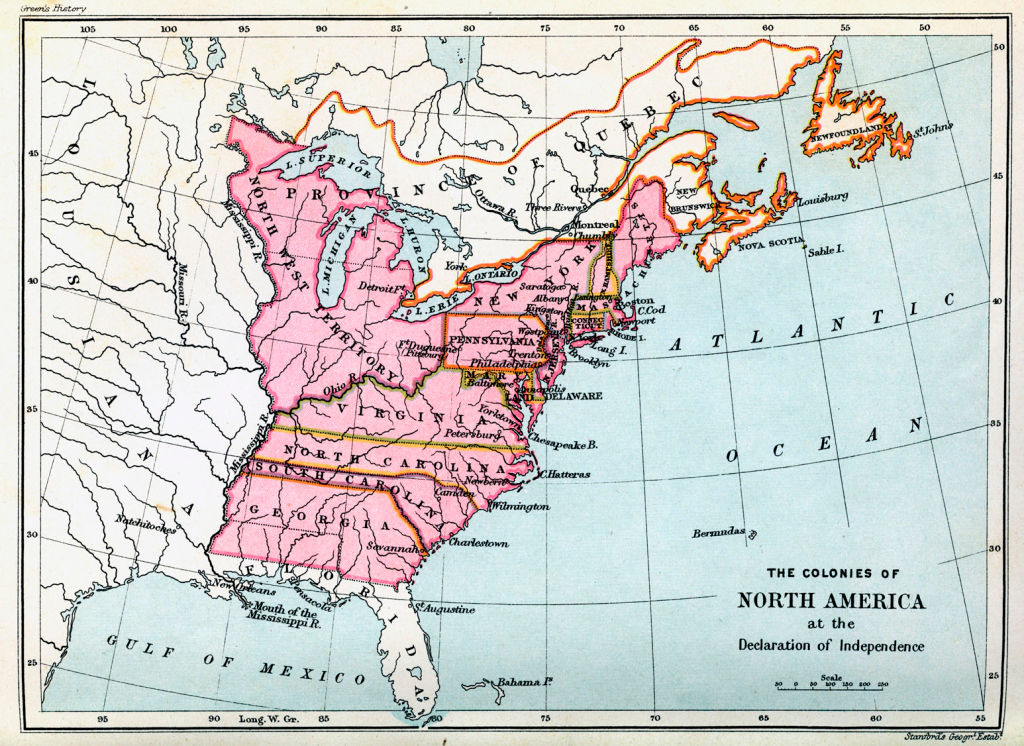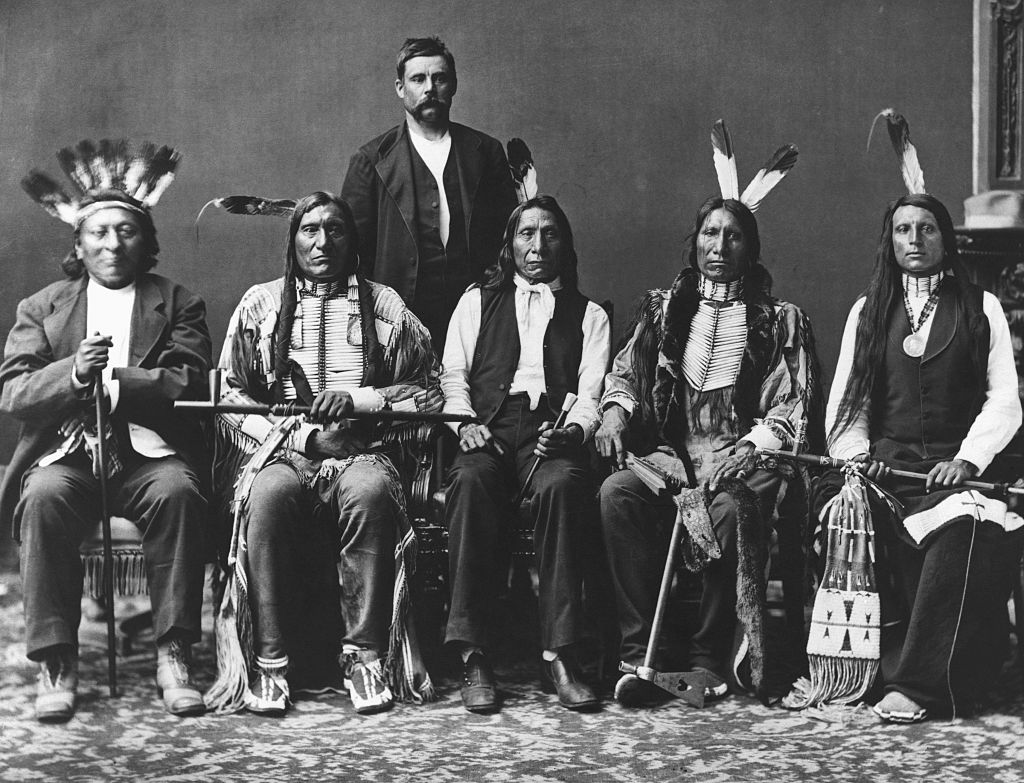
Hämäläinen is Rhodes Professor of American History at Oxford University. His new book is Indigenous Continent: The Epic Contest for North America. He is also the author of The Comanche Empire, winner of the Bancroft Prize, and Lakota America: A New History of Indigenous Power.
There is an old, deeply rooted story about America that goes something like this: Columbus stumbles upon a strange continent and brings back stories of untold riches. The European empires rush over, eager to stake out as much of this astonishing New World as possible. Even as they clash, they ignite an era of colonial expansion that lasts roughly four centuries, from the conquest of Hispaniola in 1492 to the Wounded Knee Massacre in 1890. Between those two moments, European empires and the nascent American empire amass souls, slaves, and territory, dispossessing and destroying hundreds of Indigenous societies. The Indians fight back but cannot stop the onslaught. Resourceful and defiant though they might be, they are no match for the newcomers and their raw ambition, superior technology, and lethal microbes that penetrate Native bodies with shocking ease. Indians are doomed; Europeans are destined to take over the continent; history moved irreversibly toward Indigenous destruction.
But there is another story we can tell, challenging the notion that colonial expansion was inevitable, and that colonialism defined the continent, as well as the experiences of those living on it.
Rather than a “colonial America,” we should speak of an Indigenous America that was only slowly and unevenly becoming colonial. By 1776, various European colonial powers together claimed nearly all of the continent for themselves, but Indigenous peoples and powers controlled it. The maps in modern textbooks that paint much of early North America with neat, color-coded blocks confuse outlandish imperial claims for actual holdings.
More from TIME
From the beginning of colonialism in North America to the Lakotas’ final military triumphs, a multitude of Native nations fought fiercely to keep their territories intact and their cultures untainted, frustrating the imperial pretensions of France, Spain, Britain, the Netherlands, and eventually the United States. When American history is detached from mainstream historical narratives that privilege European ambitions for power, European perspectives, and European sources, the record shows instead—time and time again, and across centuries—that Indians blocked and demolished colonial projects, relying on sophisticated political systems of kinship that allowed for flexible diplomacy and war-making, continuously reshaping borders on the continent and thwarting colonial ambitions.
Both Red Cloud’s War and the Battle of Little Bighorn—in which the Lakota Indians and their Cheyenne and Arapaho allies defeated the U.S.—have entered the history books as flukes, blamed on poor leadership and on a canny enemy familiar with the terrain. Seen from the Native American perspective, however, Red Cloud’s War and Custer’s Last Stand appear not as historical anomalies, but as the logical culmination of a long history of Indigenous power in North America. They were more expected than extraordinary.
There are many examples of similar inversions that occurred with other notable battles: the Pequot and Raritan massacres of 1637 and 1644, respectively, seemed to mark the sweeping collapse of Indigenous power in the Northeast. In truth, the massacres exposed a deep-rooted European anxiety over enduring Indigenous power: the attacks were so vicious because the colonists feared the Indians who refused to submit to their rule. The wars with the far more numerous and larger Native nations stretched the colonists near their breaking point. At midcentury, colonial settlements in North America consisted of some two dozen seaside towns and a handful of forts of little consequence on the coastal plains; curbed by Indigenous power, the English colonists had spread up and down along the Atlantic coast, latching onto its sheltering estuaries and managing only fleeting inroads into the continent’s interior. The Appalachians and the lands west of them remained largely unknown to white people.
The violent clashes between Native Americans and colonists during the late 1670s, which came to be known as Metacom’s War, or King Philip’s War to the English, were a shocking calamity to the colonists, even in apparent victory. New England had lost six hundred soldiers, roughly ten percent of its strength, and at least a thousand colonists had died. The colony suffered the loss of a staggering £150,000 in property at a time when £100 was a very comfortable yearly salary. More than a thousand colonial homes had been burned, and some two dozen towns had been either destroyed or severely damaged. The English would not reoccupy their prewar borders until 1700.
Read More: You Can’t Tell the Story of 1776 Without Talking About Race
At the end of the seventeenth century, nearly simultaneous Indigenous rebellions against European imperial ambitions in all regions of North America almost thwarted English, French, and Spanish colonists. Although suffering defeats, Native Americans had rolled colonialism back in different corners of the continent, forcing colonists to retreat, recalibrate their ambitions, and reconsider their ingrained ideas about Native peoples. What made the Indigenous resistance so effective throughout the 18th and well into the 19th century were their systems of kinship and diplomacy which allowed them to recruit soldiers from several nations and forge strategic alliances that played colonial powers off of one another.
When the Indian wars finally came to an end in 1877, the United States was both imperious and exhausted. Since its founding in 1776, there had been more than sixteen hundred official military engagements with Native Americans. Moreover, while fighting Indians, the U.S. had descended into a draining and demoralizing Civil War that had claimed as many as 750,000 American lives. When peace finally came, the U.S. committed to completing not one but two reconstructions, of the American South and of the Indigenous West. Compared to the reconstruction of the American South, which involved conciliatory elements, the Indigenous reconstruction was, on the whole, harsh and vindictive, featuring more “civilization programs,” boarding schools designed to “kill the Indian to save the man,” and land policies that labeled Indigenous territories “surplus land.”
The four-hundred-year struggle to keep the continent Indigenous had stretched colonists from the European powers, and then the U.S., to the breaking point again and again. The enormous range of Native nations and the sheer depth and multiplicity of their resistance had frustrated the colonists, if it did not kill them. Some nations relied on naked force and numbers to corral and punish colonial powers, while others sought alliances with them. Some forged ties to other Native nations and reinvented themselves as confederacies, such as the Six Nations of the Iroquois Confederacy, who were the dominant imperial power in the heart of North America for generations, and in the early nineteenth century the Comanches and Lakotas built empires of their own, in part to survive colonialism. Instead of fighting these Indigenous powers, the colonists placated them. They desperately wanted to be allies and not enemies. They sided with power.

Smaller nations relied on more nuanced and delicate tactics. Rather than confronting colonial powers directly in battle, they evaded them by making themselves small and inconspicuous, using the striking environmental variety of North America. The Catawbas, Shoshones, Utes, Nez Perces, Blackfoot, Seminoles, and others found refuge in deserts, mountains, and swamps, evading the settler empires that struggled with difficult and strange terrain, while the Shawnees, “the greatest travellers in America,” countered colonial displacement with a highly organized Indigenous diaspora. In the lower Mississippi Valley, the petites nations made themselves into forceful regional powers through strategic mobility, calculated violence, and expedient alliances, keeping just ahead of the imperial gaze of the surrounding colonial empires.
Indigenous power in North America reached its apogee in the mid- to late nineteenth century, which, at first glance, appears counterintuitive. This was the period when the country emerged onto the world stage with its “monstrous contiguous economic territories,” inspiring awe and fear in Germany and fueling an impression as the “greatest menace” in Italy. Subduing independent Native nations and erasing their sovereignty seemed to the imperial U.S. a straightforward problem of plying its overwhelming military might and technological advances, including railroads. But the Indigenous nations, too, reinvented themselves, in part as a response to the rising American empire. The powerful Comanches reduced much of the Mexican Republic to an extractive hinterland, enabling them to reign over an oversized section of the hemisphere. The Lakotas, relying on their equestrian mobility, their broad alliance network, and their generations-long experience of blocking colonial ambitions, emerged as the leading guardians of the Indigenous continent. Over a period of seven decades, they foiled U.S. expansion again and again, protecting in the process scores of smaller and more vulnerable nations. Looking east from the North American West, the history of North America emerges as a single story of resolute resistance that kept much of the continent Indigenous for generations.
Set against the deep history of the Indigenous continent, American history looks fundamentally different. So does the American present. Today, sovereign Indigenous America persists in the dynamism of modern Native communities, in the endurance of traditional ways of life, and in the continuation and evolution of the primary Indian response to colonialism: resistance.
Adapted from Pekka Hämäläinen’s Indigenous Continent: The Epic Contest for North America, published by Liveright/Norton
More Must-Reads From TIME
- The 100 Most Influential People of 2024
- The Revolution of Yulia Navalnaya
- 6 Compliments That Land Every Time
- What's the Deal With the Bitcoin Halving?
- If You're Dating Right Now , You're Brave: Column
- The AI That Could Heal a Divided Internet
- Fallout Is a Brilliant Model for the Future of Video Game Adaptations
- Want Weekly Recs on What to Watch, Read, and More? Sign Up for Worth Your Time
Contact us at letters@time.com